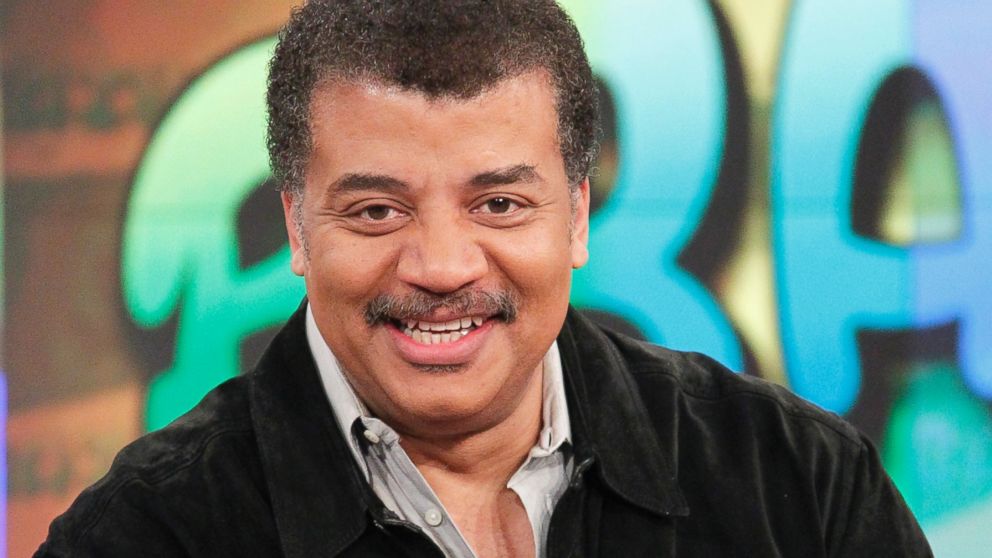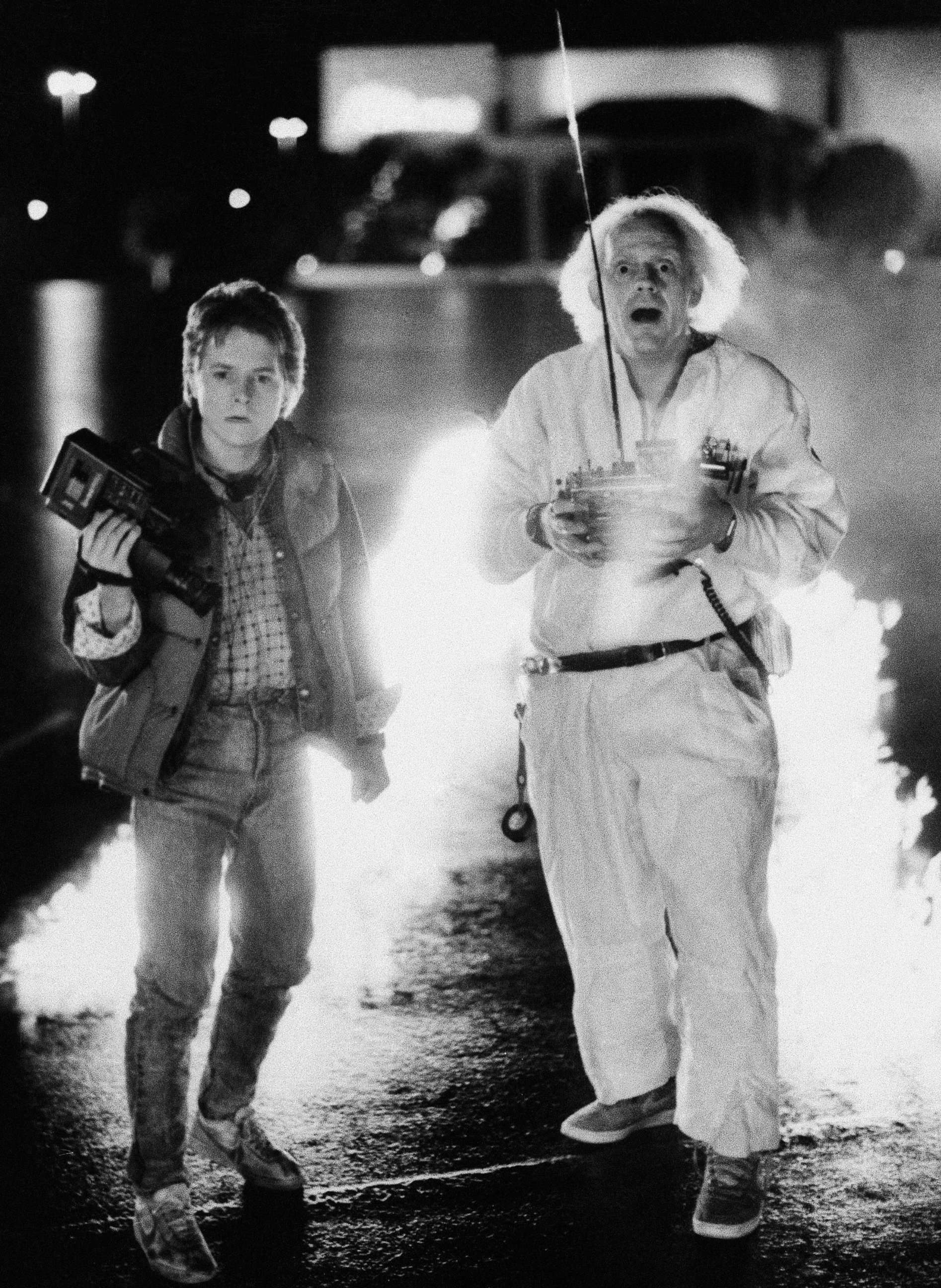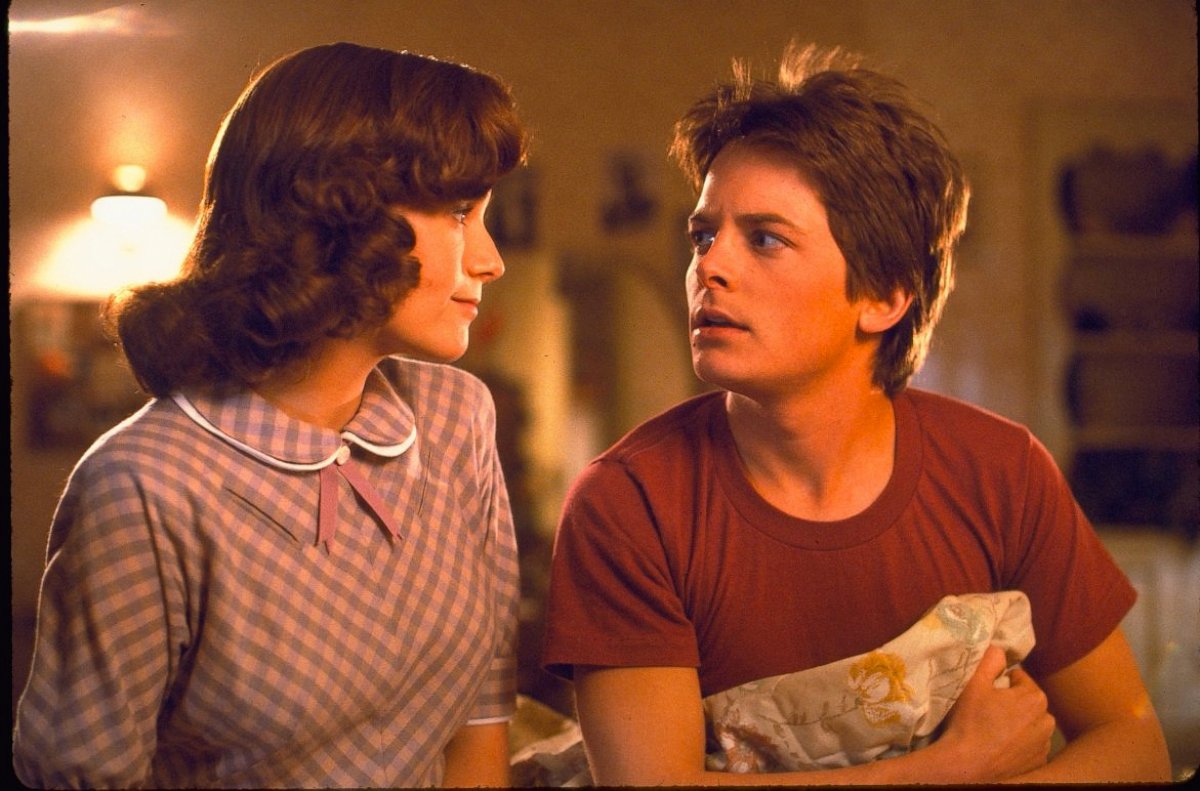'Back to the Future' 30th Anniversary: Neil deGrasse Tyson Talks Time Travel
The astrophysicist talks 'Back to the Future' for movie's 30th anniversary.

— -- Today marks the 30th anniversary of "Back to the Future" hitting theaters and launching Michael J. Fox into super stardom. In the iconic movie, Fox's character Marty McFly goes back in time to 1955 to change his father's past, while also saving his friend and time travel inventor Doc Brown.
With this in mind, ABC News spoke to author, astrophysicist, cosmologist and basically one of the smartest men on the planet, Dr. Neil deGrasse Tyson of the Hayden Planetarium, on whether this movie and the premise that a DeLorean that hit 88 miles per hour using 1.21 gigawatts could actually travel back in time.
Here's what the man had to say.
ABC News: How are you doing?
Dr. Tyson: I'm good, the universe is good, I'm good, thanks for asking.
ABC: Is time travel possible?
Dr. Tyson: We have ways of moving into the future. That is to have time tick more slowly for you than others, who you return to later on. We've known that since 1905, Einstein's special theory of relativity, which gives the precise prescription for how time would slow down for you if you are set into motion. The effect of motion on the rate at which your time ticks is not something you would notice much in everyday life. You'd have to travel at speeds very high, relative to the speed of light.
So, 88 miles per hour, with a flux capacitor would not do it. That would not count even close to traveling at the speed of light. Even so, Einstein's theory of relativity is a prescription for traveling into your own future. You would still count seconds in between when you initiated this and when you finished it, it's just that others would count many, many more seconds. You would rejoin them at a later time on their timeline than your timeline. In a way, you are going into the future, but it's you that's doing that. You had left your little world to go on this journey.

ABC: How could "Back to the Future" actually work?
Dr. Tyson: You would need multiple universes going on at the same time. That would be a matter of which one you joined. In fact, at the end of the movie, he sees himself in the parking lot of the Lone Pine Mall (formerly Twin Pines) and so he exists twice in that same universe, in that same timeline. That's unusual, but it's a fun story. If they put enough other homework into a good story, you cut them some slack. You say, "Ok, I'll give that one to you."
ABC: You talked about going into the future, can we go back in time?
Dr. Tyson: There are equations that can be solved ... that colleagues who I trust have. One of them, his name is Professor Richard Gott -- he wrote a book some years ago called "Time Travel in Einstein's Universe." In it, he goes through all kinds of ways to go forward in time and backwards in time. There is a way to do it, but it requires extreme distortion in the fabric of space and time. Like two black holes near one another and exercise a trajectory around one and back loop de loop around the other, and you can actually enter a point in time that is before when you left.
It is possible, the equations allow it, but we don't know how to make that happen in practice. And we don't know whether there's some yet to be discovered law of physics that would prevent it.
ABC: Let's break down how they traveled time in "Back to the Future."
Dr. Tyson: With "Back to the Future," they put the time machine in the DeLorean and I've tweeted once before, there is such a thing as flux, there is such a thing as a capacitor, there's no such thing as a flux capacitor. The power source doesn't matter. The issue is how much power does it need.
[Doc Brown] said 1.21 gigawatts, that's a lot of watts. You would need a very highly-concentrated energy source, which in 1955 didn't really exist commercially. Hence, they went to the lightning bolt.

What I was enchanted by [in "Back to the Future 2"] was the device he used to create energy in the car when he brought it back from the future that he had been visiting. He's got Mr. Fusion, which is a little fusion device above the hood of his car and you stuff organic materials in it and then it undergoes thermonuclear fusion to power the car. At the time of the movie, There had been a highly advertised coffee maker called Mr. Coffee. Everyone knew this and it was Mr. Coffee and it made your coffee in the morning. ... That was now today a hidden reference to a TV commercial of the era. Mr. Coffee and now he has Mr. Fusion. I thought that was a nice touch, imagine a day where you practically extract energy from anything. ... It'd be the ideal recycling device, by the way.
ABC: If you went back in time, could you change the future?
Dr. Tyson: This fourth dimension we call time, it was captured as I'm describing it in Kurt Vonnegut's "Slaughterhouse-Five," which was also a film. In it, he's abducted by aliens and he's lifted into a higher dimension. In so doing, he sees his entire timeline, no differently than he sees space coordinates he had lived in. You can ask, "When do you die?" He's always dying. "When were you born?" I'm always being born. It's right there. Just go to the timeline, where he's always being born. ... So the timeline is set, you have the illusion of free will, but, in fact, that illusion comes about because you don't know the future. Because you are a prisoner of the present, forever locked in transition, between the past and the future.
So, if you managed to change the timeline, then it has been hypothesized that the universe must have at the moment split, because everything before those two universes was identical. The moment an event changes, the universe would split and then you'd have two different world lines emanating from that one point in time. Then you can create whatever future was the consequence of your changed actions.
So, in "Back to the Future," he goes back in time, changes key events and then he jumps forward in time, but he jumps forward in time into the universe that he changed ... so, Biff gets punched by his father and everything changes thereafter.
ABC: If you could go back in time, what would you do?
Dr. Tyson: I'd go back in time and have a conversation with Isaac Newton. I'd want to explore the brilliance of those who have come before us. I'd want to talk to Beethoven or Mozart and just hear their inner creativity manifest in front of my eyes. I'd want to see the courage of Joan of Arc, as she stands up against unspeakable odds. I would want a sampling, first-hand, at what our species is capable of and I would bring that forward into the present and remind people that our genetics overlaps with everyone who has ever lived. So, our potential is unlimited.




